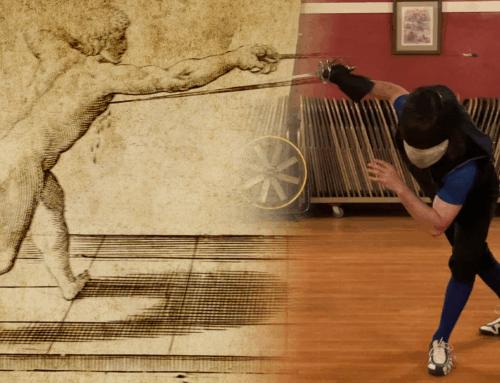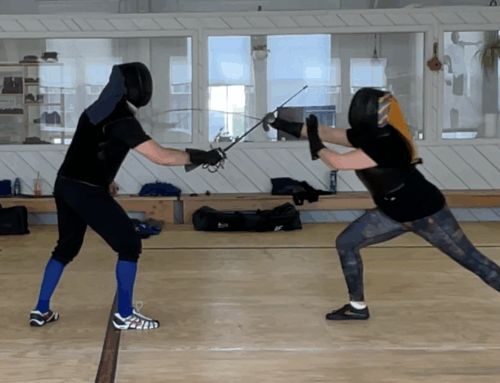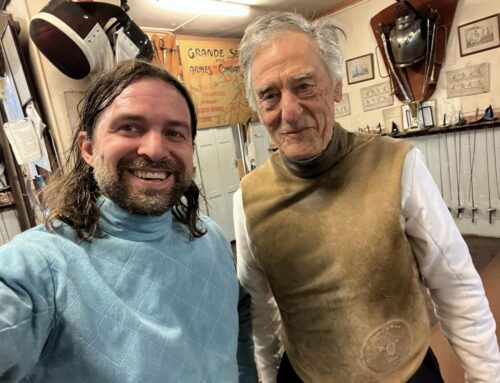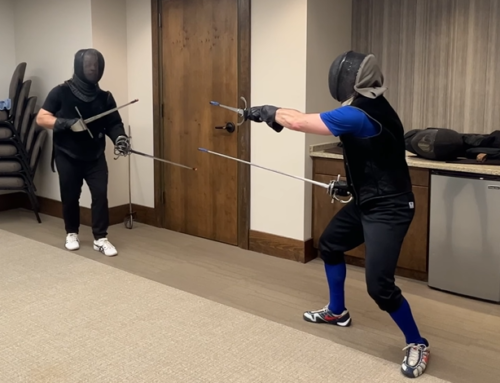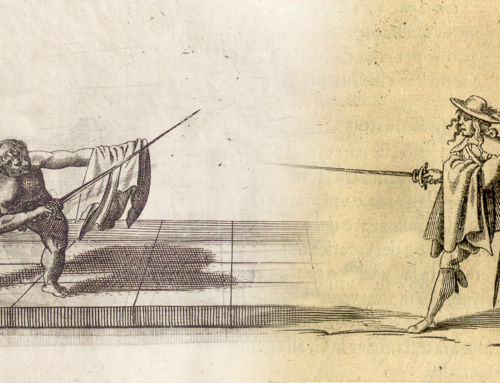Today we’ll be looking at the plays in Plate 13 of La Scherma by Francesco Ferdiando Alfieri. You can snag a copy over on Amazon if you want to follow along.
There’s also a new translation of Alfieri that came out last week by Tom Leoni. Tom’s well known for his rapier manual translations. Mine’s been in transit in my city since 5am. It’s 10pm. I’m assuming it ain’t making it today. 🙁
 You can also find the rest of my Alfieri & other historical rapier research over in the Historical Fencing section.
You can also find the rest of my Alfieri & other historical rapier research over in the Historical Fencing section.
In today’s chapter, we’re going over some more body voids. We’ve hit a little of it before with some passing steps but today’s chapter is voiding sans-passing step, as we can see in Plate 14.
Alfieri starts off saying that by voiding the body “we make ourself master of our enemy’s life.” And who doesn’t like that?
The Plays
Play #1. Plate 14 starts off with Gentleman 26 finding and gaining the blade of Gentleman 27. Gentleman 26 then commits to a firm footed lunge. Gentleman 27, however, perceives this attack and bring his “body out of presence” (aka void) while also extending into an attack.
Alfieri doesn’t give any detail into how the void should be done other than to move the body out of the line of attack. The plate, however, demonstrates something akin to a girata which is the turning of the front foot inward so the hell is facing your opponent while the rear foot remains in place. This is the simplest (or smallest movement) of body voids one can perform.
Note: In the next chapter, Alfieri talks about “carrying the body out of presence” while in this chapter he talks about “voiding the body.” Voiding seems to be the smaller void while carrying is a bigger body void.
Play #2. Alternately, Gentleman 27 can find Gentleman 26’s sword along Line B, and extend to lunge. However, if Gentleman 26 attacks first, Gentleman 27 should form a low seconda guard along Line C and throw a mandritto (R-L cut) along Line A.
I’ll have to play around with this to get a better idea of how it should work. It sounds like Alfieri (for once) is giving a little more detail in how this cut with a void should work. It sounds like a parry-riposte with a moulinet cut. I’ll also compare with Leoni’s version when it comes in. Stay tuned.
Play #3. Lastly, Gentleman 27, having found his opponent’s blade on the inside line and created an opening to strike Gentleman 26’s chest; if Gentleman 26 extends to attack, Gentleman 27 can void the body and strike in tempo.
This is basically the first play but Gentleman 27 is initiating the play instead of Gentleman 26. Gentleman 26 is basically attacking from a very poor position and eats steel for his efforts.




